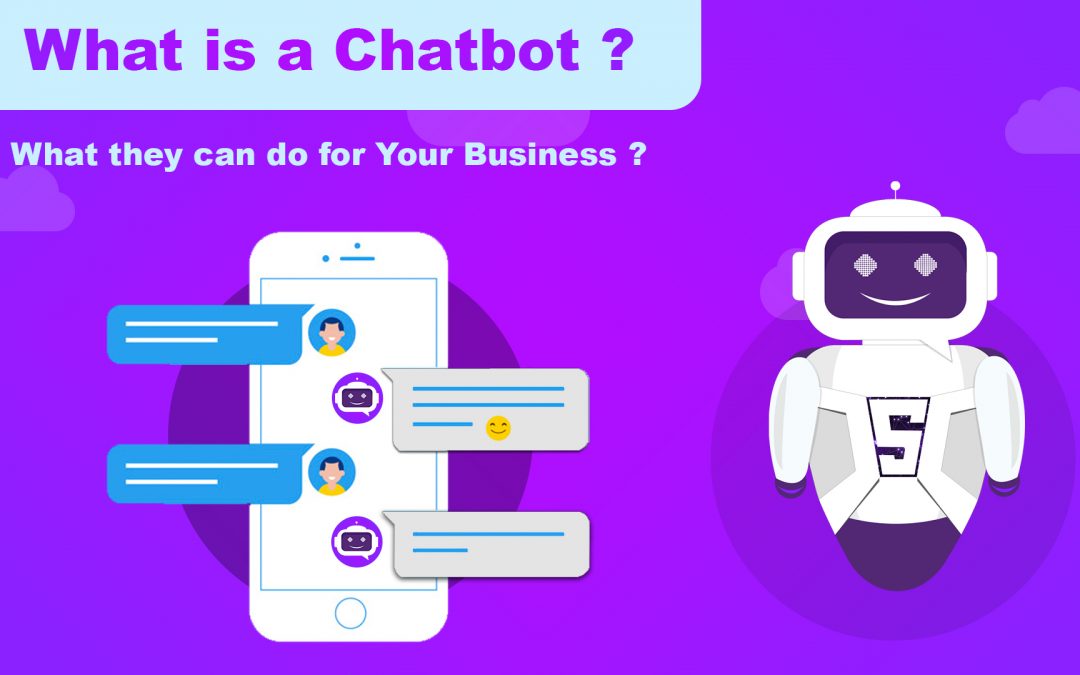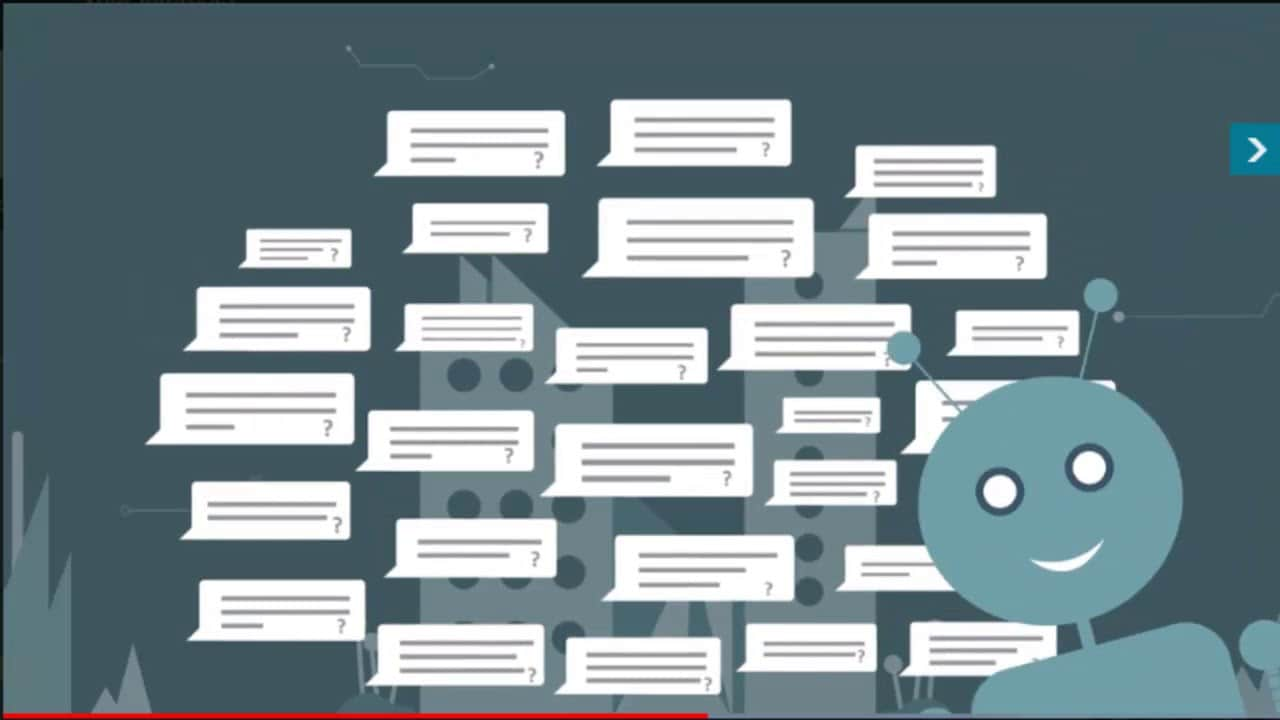What is a chatbot?
At the most basic level, a chatbot is a computer program that simulates and processes human conversation (either written or spoken), allowing humans to interact with digital devices as if they were communicating with a real person. Chatbots can be as simple as rudimentary programs that answer a simple query with a single-line response, or as sophisticated as digital assistants that learn and evolve to deliver increasing levels of personalization as they gather and process information.
You’ve probably interacted with a chatbot whether you know it or not. For example, you’re at your computer researching a product, and a window pops up on your screen asking if you need help. Or perhaps you’re on your way to a concert and you use your smartphone to request a ride via chat. Or you might have used voice commands to order a coffee from your neighborhood café and received a response telling you when your order will be ready and what it will cost.
How do chatbots work?
Driven by AI, automated rules, natural-language processing (NLP), and machine learning (ML), chatbots process data to deliver responses to requests of all kinds.
There are two main types of chatbots.
- Task-oriented (declarative) chatbots are single-purpose programs that focus on performing one function. Using rules, NLP, and very little ML, they generate automated but conversational responses to user inquiries. Interactions with these chatbots are highly specific and structured and are most applicable to support and service functions—think robust, interactive FAQs. Task-oriented chatbots can handle common questions, such as queries about hours of business or simple transactions that don’t involve a variety of variables. Though they do use NLP so end users can experience them in a conversational way, their capabilities are fairly basic. These are currently the most commonly used chatbots.
- Data-driven and predictive (conversational) chatbots are often referred to as virtual assistants or digital assistants, and they are much more sophisticated, interactive, and personalized than task-oriented chatbots. These chatbots are contextually aware and leverage natural-language understanding (NLU), NLP, and ML to learn as they go. They apply predictive intelligence and analytics to enable personalization based on user profiles and past user behavior. Digital assistants can learn a user’s preferences over time, provide recommendations, and even anticipate needs. In addition to monitoring data and intent, they can initiate conversations. Apple’s Siri and Amazon’s Alexa are examples of consumer-oriented, data-driven, predictive chatbots.
Advanced digital assistants are also able to connect several single-purpose chatbots under one umbrella, pull disparate information from each of them, and then combine this information to perform a task while still maintaining context—so the chatbot doesn’t become “confused.”
The value chatbots bring to businesses and customers
Chatbots boost operational efficiency and bring cost savings to businesses while offering convenience and added services to internal employees and external customers. They allow companies to easily resolve many types of customer queries and issues while reducing the need for human interaction.
With chatbots, a business can scale, personalize, and be proactive all at the same time—which is an important differentiator. For example, when relying solely on human power, a business can serve a limited number of people at one time. To be cost-effective, human-powered businesses are forced to focus on standardized models and are limited in their proactive and personalized outreach capabilities.
How chatbots have evolved
The origin of the chatbot arguably lies with Alan Turing’s 1950s vision of intelligent machines. Artificial intelligence, the foundation for chatbots, has progressed since that time to include superintelligent supercomputers such as IBM Watson.
The original chatbot was the phone tree, which led phone-in customers on an often cumbersome and frustrating path of selecting one option after another to wind their way through an automated customer service model. Enhancements in technology and the growing sophistication of AI, ML, and NLP evolved this model into pop-up, live, onscreen chats. And the evolutionary journey has continued.
With today’s digital assistants, businesses can scale AI to provide much more convenient and effective interactions between companies and customers—directly from customers’ digital devices.
By contrast, chatbots allow businesses to engage with an unlimited number of customers in a personal way and can be scaled up or down according to demand and business needs. By using chatbots, a business can provide humanlike, pers
ngly becoming the preferred method for connecting with businesses for certain types of transactions. Delivered through messaging platforms, chatbots enable a level of service and convenience that in many cases exceeds what humans can provide. For example, banking chatbots save an average of four minutes per inquiry compared to traditional call centers. The same capabilities that help businesses achieve greater efficiency and cost reductions also deliver benefits to customers in the form of an improved customer experience. It’s a win/win proposition
Why were chatbots created?
Digitization is transforming society into a “mobile-first” population. As messaging applications grow in popularity, chatbots are increasingly playing an important role in this mobility-driven transformation. Intelligent conversational chatbots are often interfaces for mobile applications and are changing the way businesses and customers interact.
Chatbots allow businesses to connect with customers in a personal way without the expense of human representatives. For example, many of the questions or issues customers have are common and easily answered. That’s why companies create FAQs and troubleshooting guides. Chatbots provide a personal alternative to a written FAQ or guide and can even triage questions, including handing off a customer issue to a live person if the issue becomes too complex for the chatbot to resolve. Chatbots have become popular as a time and money saver for businesses and an added convenience for customers.
Common chatbot uses
Chatbots are frequently used to improve the IT service management experience, which delves towards self-service and automating processes offered to internal staff. With an intelligent chatbot, common tasks such as password updates, system status, outage alerts, and knowledge management can be readily automated and made available 24/7, while broadening access to commonly used voice and text based conversational interfaces.
On the business side, chatbots are most commonly used in customer contact centers to manage incoming communications and direct customers to the appropriate resource. They’re also frequently used for internal purposes, such as onboarding new employees and helping all employees with routine activities including vacation scheduling, training, ordering computers and business supplies, and other self-service activities that don’t require human intervention.
On the consumer side, chatbots are performing a variety of customer services, ranging from ordering event tickets to booking and checking into hotels to comparing products and services. Chatbots are also commonly used to perform routine customer activities within the banking, retail, and food and beverage sectors. In addition, many public sector functions are enabled by chatbots, such as submitting requests for city services, handling utility-related inquiries, and resolving billing issues.
Why AI and data matter when it comes to chatbots
Both the benefits and the limitations of chatbots reside within the AI and the data that drive them.
AI considerations: AI is very good at automating mundane and repetitive processes. When AI is incorporated into a chatbot for these types of tasks, the chatbot usually functions well. However, if a demand is made on a chatbot that extends beyond its capabilities or makes its task more complicated, the chatbot might struggle—and that has negative consequences for businesses and customers. There are questions and issues that chatbots simply may not be able to answer or resolve—for example, complex service issues that have a large number of variables.
Developers can work around these limitations by adding a contingency to their chatbot application that routes the user to another resource (such as a live agent) or prompts a customer for a different question or issue. Some chatbots can move seamlessly through transitions between chatbot, live agent, and back again. As AI technology and implementation continue to evolve, chatbots and digital assistants will become more seamlessly integrated into our everyday experience.
Data considerations: All chatbots use data, which is accessed from a variety of sources. As long as the data is high quality and the chatbot is developed correctly, the data will be a chatbot enabler. However, if the data quality is poor, it will limit the chatbot’s functionality. And even if the data quality is good, if the chatbot’s ML training wasn’t modeled properly or is unsupervised, the chatbot can perform poorly—or unexpectedly, at the very least.
In other words, your chatbot is only as good as the AI and data you build into it.
Are chatbots bad?
There are some misconceptions about the term chatbot. Although the terms chatbot and bot are sometimes used interchangeably, a bot is simply an automated program that can be used either for legitimate or malicious purposes. The negative connotation around the word bot is attributable to a history of hackers using automated programs to infiltrate, usurp, and generally cause havoc in the digital ecosystem.
Bots and chatbots, therefore, should not be confused. Generally speaking, chatbots do not have a history of being used for hacking purposes. Chatbots are conversational tools that perform routine tasks efficiently. People like them because they help them get through those tasks quickly so they can focus their attention on high-level, strategic, and engaging activities that require human capabilities that cannot be replicated by machines.
The future of chatbots
Where is the evolution of chatbots headed? Chatbots, like other AI tools, will be used to further enhance human capabilities and free humans to be more creative and innovative, spending more of their time on strategic rather than tactical activities.
In the near future, when AI is combined with the development of 5G technology, businesses, employees, and consumers are likely to enjoy enhanced chatbot features such as faster recommendations and predictions, and easy access to high-definition video conferencing from within a conversation. These and other possibilities are in the investigative stages and will evolve quickly as internet connectivity, AI, NLP, and ML advance. Eventually, every person can have a fully functional personal assistant right in their pocket, making our world a more efficient and connected place to live and work.






